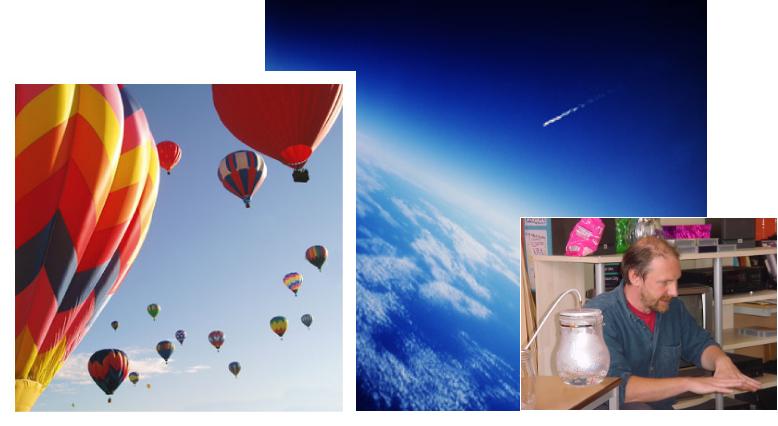 |
|
|
The Air Show |
|
 |
|
|
The Air Show is relevant to the Science, Geography and History curricula at KS2, KS3 and KS4. The Air Show is all about the Earth's Atmosphere, and particularly atmospheric pressure. The show starts with the simple idea that because air is a material substance which has weight we are all under pressure all of the time. The show introduces the idea of a pressure force which acts equally in all directions and demonstrates the pressure of the atmosphere with a new take on the classic 'Magdeburg Hemispheres' experiment. A series of classic demonstrations with an air pump come next; to show that sound won't travel in a vacuum, air resitance slows light objects down as they fall, and why you can't make a decent cup of tea at the top of Mount Everest. Then we look at putting our knowledge of the air and its properties to use, both in the steam engine and in flight before finishing off with a brief look at the weather, leading up to a spectacular finale. Key Concepts: Air is a material substance which feels the effect of the Earth's gravity - it has weight. The weight of the air is experienced at the Earth's surface as atmospheric pressure. Pressure forces act equally in all directions. The mass of the Earth's atmosphere produces a force of about 10 tonnes weight on each square meter of the Earth's surface. By creating a vacuum, a space empty of air, it is possible to demonstrate this large force acting, and to get it to do useful work. Sound does not travel through a vacuum. The pressure of the Earth's atmosphere keeps water and other substances liquid. A vacuum can be created in many ways, including mechanically removing the air, or condensing steam. This knowledge was harnessed to create the first steam engines, the earliest practical heat engines. When air is heated its density is reduced. This explains how chimneys work, and why hot-air balloons fly. The pressure in a flowing fluid is less than that in a stationary one, all other things being equal. This, applied to the air, helps to explain how heavier-that-air flight is possible. Weather patterns are caused by the motion of heated and cooled parcels of air and the rotation of the Earth. USE YOUR BROWSER'S 'BACK' BUTTON TO RETURN TO THE PREVIOUS PAGE
|
|